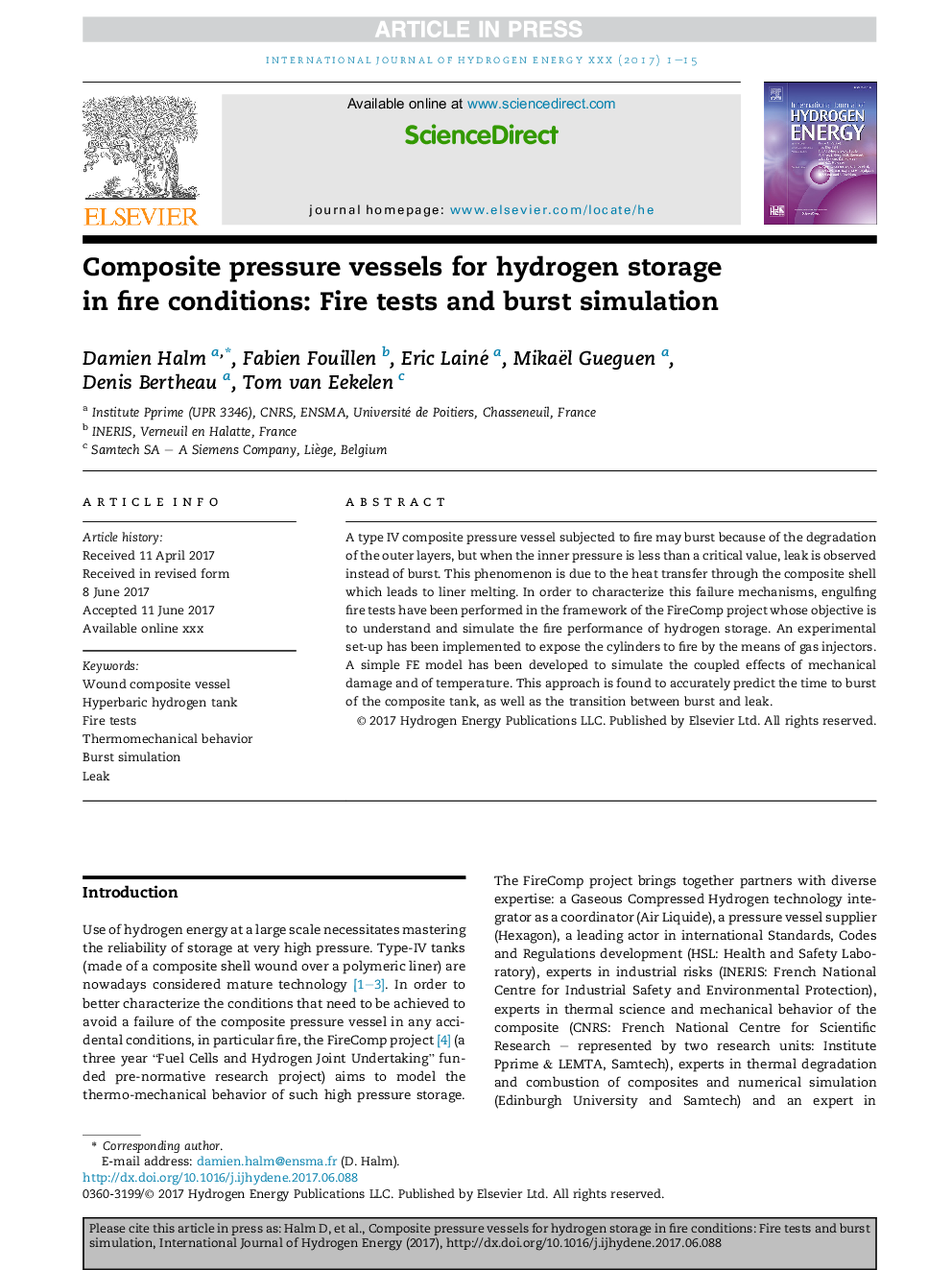| Article ID | Journal | Published Year | Pages | File Type |
|---|---|---|---|---|
| 5146642 | International Journal of Hydrogen Energy | 2017 | 15 Pages |
Abstract
A type IV composite pressure vessel subjected to fire may burst because of the degradation of the outer layers, but when the inner pressure is less than a critical value, leak is observed instead of burst. This phenomenon is due to the heat transfer through the composite shell which leads to liner melting. In order to characterize this failure mechanisms, engulfing fire tests have been performed in the framework of the FireComp project whose objective is to understand and simulate the fire performance of hydrogen storage. An experimental set-up has been implemented to expose the cylinders to fire by the means of gas injectors. A simple FE model has been developed to simulate the coupled effects of mechanical damage and of temperature. This approach is found to accurately predict the time to burst of the composite tank, as well as the transition between burst and leak.
Related Topics
Physical Sciences and Engineering
Chemistry
Electrochemistry
Authors
Damien Halm, Fabien Fouillen, Eric Lainé, Mikaël Gueguen, Denis Bertheau, Tom van Eekelen,
